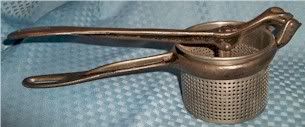
 Are they the same? This is an interesting question? Emphatically NO! Check the contents label, you’ll find that the garlic salt contains Salt - it is made by combining 3 parts salt and 1 part garlic powder.
Are they the same? This is an interesting question? Emphatically NO! Check the contents label, you’ll find that the garlic salt contains Salt - it is made by combining 3 parts salt and 1 part garlic powder. Garlic Powder, Granular Garlic and Minced garlic are all just garlic. Why is this important? Because it adds unnecessary Sodium to your food - not good for those of that have problems with blood pressure.
If a recipe calls for Garlic Salt, try using Garlic powder (1/3 qty) instead and add salt by itself while cooking, or better still, later at the table.












